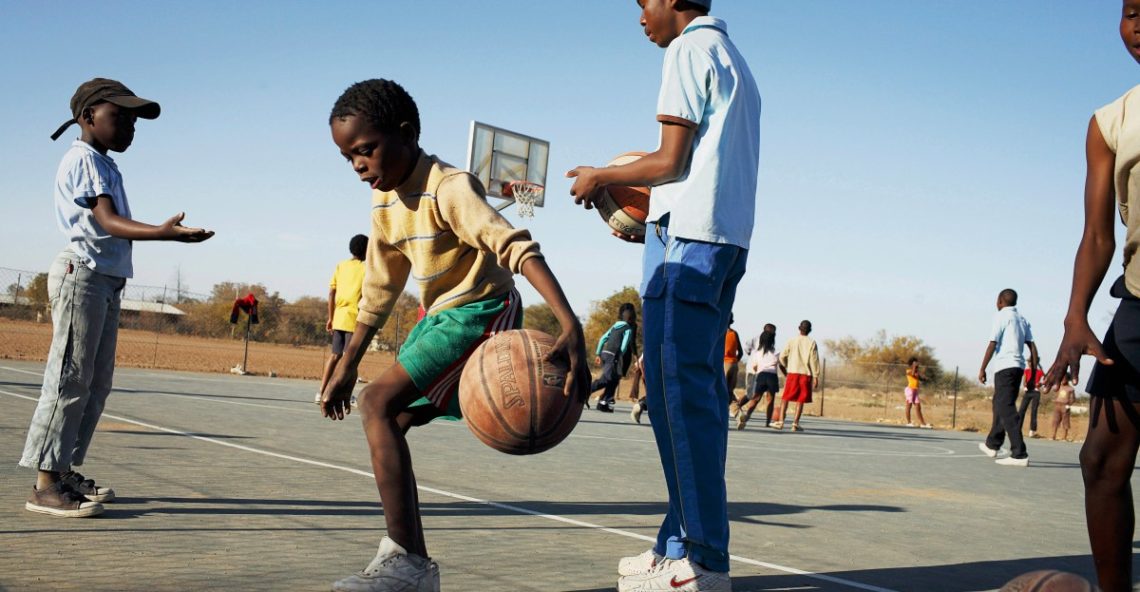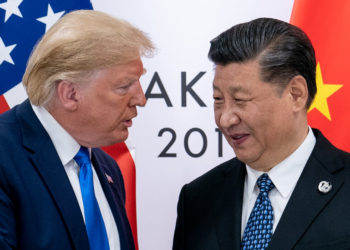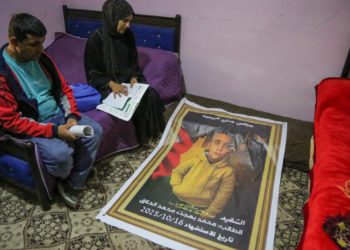Botswana has been getting a lot of calls lately from across the African continent, prodding the nation — once “at risk of extinction” from HIV — to tell the world how they did the impossible: squash childhood HIV rates.
The number of children living with HIV has declined sharply everywhere, but nowhere more so than in Botswana, which has managed to slash its childhood infection rate by more than 98 percent since the 1990s.
At its peak, in what was one of the world’s worst outbreaks of HIV, one in eight infants were infected at birth. Mortality in young kids nearly doubled over a decade, with 3,000 children dying of AIDS each year. And 25,000 children — one in every classroom of 25 — had long-term symptoms of the virus, which without treatment, destroys the body’s immune system, turning even common infections deadly.
Now, new infections in kids are so exceedingly rare — at under 100 per year — that every infant diagnosed with HIV now prompts a comprehensive audit by the country’s public health officials.
It is a remarkable turnaround. While Botswana’s HIV rate is still the fourth-highest in the world — affecting up to a third of adults in some regions — the number of babies born with HIV today is virtually zero.
It took time to pay off, but Botswana has managed to build the most robust HIV prevention infrastructure in sub-Saharan Africa, particularly for pregnant women and children. Life-saving antiretroviral therapies — which can transform HIV into a manageable and largely untransmittable chronic condition — have been widely available for free in the country since 2002. The nation’s government launched a program to prevent mother-to-child transmissions in 1999, expanded its free coverage of maternal services over the years, and became one of the first countries to implement the World Health Organization’s Option B+ strategy in 2013, making a highly effective lifelong treatment regimen freely available to all pregnant and breastfeeding women living with HIV.
Thanks to those sustained public investments, Botswana became the first country in the world with a high HIV rate to achieve the World Health Organization’s Gold Tier status for eliminating mother-to-child or “vertical” transmissions as a public health threat earlier this year.
“Botswana shows you know what can happen when a country decides that no child should be born with HIV, and they actually mean it,” said Doris Macharia, president of the Elizabeth Glaser Pediatric AIDS Foundation, who began her career at the height of the HIV epidemic, working as a physician in her native Kenya and at a rural clinic in South Africa.
Even in the face of global aid cuts, which have stripped billions from highly effective HIV prevention programs, progress like Botswana’s proves that the hardest-hit countries are still moving forward.
“We’ve made phenomenal progress,” she said, “but we still have a long way to go.”
What Botswana got right
A young woman living in Botswana in 1997 had a one in four chance of contracting HIV. If she had three children in the years that followed, at least one of her babies would almost surely contract the virus during pregnancy or childbirth, or while breastfeeding.
But if her HIV-positive daughter, now a young woman, became pregnant today, her chance of transmitting the virus to her own children would be less than 1 percent — down from up to 40 percent three decades prior.
What changed?
For starters, antiretroviral therapies have gotten much better, cheaper, and infinitely more accessible than a few decades ago. About 98 percent of HIV-positive pregnant women in Botswana now access those medications, which can suppress the virus enough that it is virtually undetectable and by extension, largely untransmissible.
When babies are born with HIV today, it’s not because their mothers can’t access treatment, but because they didn’t know they had the virus to begin with.
But in Botswana, 99.8 percent of pregnant women give birth in a hospital or clinic and 95 percent access the country’s free prenatal and maternal care services — up from 70 percent in 2001. This puts them on par with the United States and far ahead of neighbors like Zimbabwe. That makes it easy to routinely screen for HIV over the course of a pregnancy — and to immediately test any newborns at risk.
“There’s no mom who wants her child to be sick,” Macharia said. “There’s no mom who wants her child to die.”
Altogether, these interventions and policies have prevented about 59,000 children from being infected with HIV since Botswana enacted a nationwide campaign against vertical transmissions in 1999, according to estimates from UNAIDS, the United Nations partnership to fight HIV/AIDS. Globally, similar policies have prevented over 4 million childhood infections.
Macharia attributed Botswana’s success not only to effective interventions, but to political will: Its government recognized the severity of the crisis relatively early on, and then consistently funded its own interventions. President Festus Mogae made combating HIV a top priority of his administration when he took office at the height of the crisis in 1998. After taking office, he quickly launched the campaign against vertical transmissions in 1999, became the first head of state to publicly test himself for HIV in 2001, and established Africa’s first national antiretroviral treatment program in 2002.
“Not all countries are created equally,” Macharia said, “but all countries have an opportunity to step up and mobilize support — to move this needle for children and moms.”
An AIDS-free generation within reach
So, how did the country pull it off? With its vast diamond reserves, Botswana is relatively wealthy — even despite recent downturns in the market. The country’s per capita income is closer to that of Mexico or Brazil than to many of its sub-Saharan neighbors, and it has the lowest corruption rate in Africa.
And while American global aid programs like the President’s Emergency Plan for AIDS Relief (PEPFAR) have been essential partners in its HIV response, the country pays its own way for about 70 percent of its HIV prevention programs, said Alankar Malviya, Botswana country director for UNAIDS. Other poorer countries in Africa, such as Nigeria, Mozambique, and Côte d’Ivoire, rely on foreign aid for 80 or 90 percent of such funding.
That’s made it harder for those nations to replicate Botswana’s cohesive national strategy — especially with today’s torrent of cuts.“The pace at which the global funding landscape for HIV has changed in the last few months is unprecedented,” Malviya said. “You cannot prepare any country for having to go through such a radical change in funding, which meant putting a pause to ongoing programs overnight.”
A lot of countries were already on their way to building roadmaps to fund their own programs in the long run, he said, but “you cannot sustain a program overnight.”
In the meantime, many are looking to Botswana — the first country to pioneer a roadmap for sustainably financing HIV prevention— for help. The country’s public health officials have advised Kenya, Namibia, and Zimbabwe and other countries on how to sustain their progress and diversify their funding in the long term.
“We’ve done so much to get to where we are, and we have so little to go,” Macharia said. Though “the last mile is always the hardest,” she thinks an AIDS-free generation is still very much in sight: “We are very, very close. We are extremely close.”
The post Botswana’s incredible HIV success story, explained in one chart appeared first on Vox.




